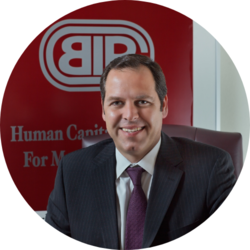
Ever imagined stepping into an elevator and finding yourself face-to-face with the CEO of your dream company? The doors close, and suddenly, you have just 30 seconds to make a lasting impression. That’s the power of a well-crafted “elevator pitch”—a concise, compelling introduction that sparks genuine connection.
Your Career Story in a Snapshot
This isn’t just about those rare elevator encounters. Think of your pitch as your career story, distilled into its most potent form. It’s a snapshot of who you are professionally, designed to pique interest and open doors, whether you’re at a formal conference, a casual networking event, or even chatting with someone at your kid’s soccer game. You never know who you might meet, or where opportunity might arise.
Define Your Professional Identity
Building a truly effective pitch takes thought and a genuine understanding of what you bring to the table. It starts with defining your professional identity. Don’t just state your title; weave it into a narrative. For example, instead of saying, “I’m a project manager,” try something like, “I’m a project manager who thrives on bringing complex projects to life, especially in the sustainability space.” This immediately tells the listener more about your passions and focus.
Showcase Your Unique Value
What makes you stand out? Skip the laundry list of skills and focus on the impact you’ve made. Quantify your achievements whenever you can. Instead of “I improved efficiency,” try “I streamlined our team’s workflow, which resulted in a 15% reduction in project completion time.” Numbers speak volumes.
And always remember the “so what?” factor. Explain the significance of your accomplishments. “…a 15% reduction in project completion time, which freed up resources to focus on new initiatives.”
Tailor Your Pitch to the Situation
Your intention matters. Be clear about what you’re hoping to achieve, but tailor it to the specific situation. At a networking event, you might be looking to connect with people in your field and learn about their work. Speaking with a potential mentor, you might be seeking guidance and advice.
Frame your intentions in a way that shows you’re also thinking about the other person. Instead of “I’m looking for a new job,” try “I’m exploring opportunities in [industry] where I can contribute my expertise in [area] to a company like yours, particularly given your work on [specific project].”
Make It a Two-Way Conversation
A good pitch is a two-way street. It’s not just about you; it’s about starting a conversation. End with a question or statement that invites a response.
Avoid generic questions like “What do you do?” Ask something specific that demonstrates you’ve done your research and are genuinely interested. For example:
“I was really impressed with your company’s recent expansion into [market]. I’d love to hear more about your strategy there.”
This shows you’re paying attention and positions you as someone who’s curious and engaged.
Practice Makes Perfect—But Stay Natural
Practice is key, but don’t aim for robotic perfection. Practice with friends, family, or mentors, and ask for honest feedback. Pay attention to how you come across. Do you sound enthusiastic and confident, but also approachable and genuine?
Record yourself and watch it back. It can be a little uncomfortable, but it’s a great way to identify areas for improvement. Practice different versions of your pitch so you can adapt to different situations.
Elevator Pitch Examples
Example 1: UX Designer
“Hi, I’m Sarah. I’m a UX designer passionate about creating intuitive and user-friendly experiences. I recently redesigned the mobile app for [client], which led to a 20% increase in user engagement. I’m fascinated by the work you’re doing at [company] in the accessibility space, and I’d love to hear more about your approach to inclusive design.”
Example 2: Sales Executive
“Hi, I’m Michael. I’m a sales executive with a track record of exceeding targets and building strong C-suite client relationships. Last year, I closed a major deal with [client] that generated $X in revenue. I’m now looking for a new challenge where I can leverage my skills to drive growth in the [industry] sector. I’ve been following your company’s success in [area], and I’m particularly interested in learning more about your sales team’s strategies.”
Common Mistakes to Avoid
- Cramming in too much information – Keep it concise and focused.
- Speaking too fast – Rushing makes you sound nervous.
- Using jargon or buzzwords – Use plain, clear language.
- Being too rehearsed – Let your personality shine through.
Keep Refining Your Pitch
Your elevator pitch is a work in progress. It’s something you’ll refine and tweak throughout your career. Keep it updated and relevant, and you’ll be amazed at the connections you make and the opportunities that come your way.

By Fernando Ortiz-Barbachano
President & CEO of Barbachano International
Barbachano International (BIP) is the premier executive search and leadership advisory firm in the Americas with a focus on diversity & multicultural target markets. Since 1992, BIP and its affiliates have impacted the profitability of over 50% of Fortune 500 Companies. BIP has been recognized by Forbes as Americas’ Best Executive Search Firms and currently ranks #10 and #3 on the West Coast.

